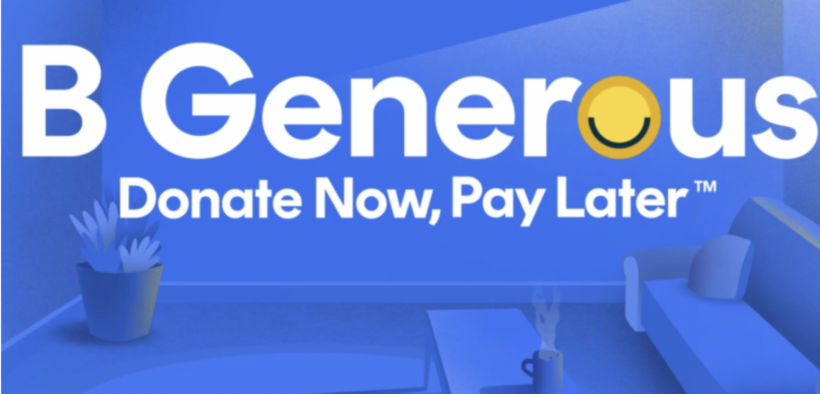Donate Now Pay Later Fundraising Tool Launched

B Generous has launched Donate Now, Pay Later, a donor-focused fundraising loan tool that enables funders to designate philanthropic donations that are immediately given to a nonprofit, but paid for by the funder over time. For tax purposes, funders are given a receipt for the lump-sum donation.

Through the program, funders may make donations for as little as $75 up to $50,000. The funder or donor is not charged interest, costs or other fees while spreading out payments over three, six or nine months, according to information from B Generous. Donations are made via a widget that integrates with a nonprofit’s online presences.
Donate Now, Pay Later was launched in conjunction with St. Paul, Minn.-based Drake Bank, a 20-year-old community bank that as of Dec. 31, 2021 included $127.3 million in net loans and leases among its assets. It is not clear whether the money fronted to nonprofits under Donate Now, Play Later would be included in the bank’s net loans and leases.
“B Generous’ biggest goal is to help nonprofits scale their mission,” B Generous founder and CEO Dominic Kalms said via a statement. “By using DNPL, nonprofits enjoy larger average donations, higher donor conversion and retention, and more money, faster, and best of all, we put an end to monthly donor cancellations and pledge defaults.” According to “proprietary research” cited by Kalms the gifts, which he deems “Point of Donation” loans, could increase average donation values by 60%.
Nonprofits, especially those addressing immediate needs such as disaster relief or which have missions that come under stress from current events might well realize benefits from large up-front cash infusions in reaction to immediate stimuli. According to the B Generous website, “[Y]our nonprofit never has to worry about donor cancellations, expired debit and credit cards, or having to wait for money to drip in each month.”
Access to MinistryWatch content is free. However, we hope you will support our work with your prayers and financial gifts. To make a donation, click here.
The Donate Now, Pay Later method might, in the short term, make up for a shortfall in new sustaining donors. According to data released earlier this year by Blackbaud’s donorCentrics unit, a pause in in-person and door-to-door solicitation during the COVID-19 pandemic resulted in “a modest decline in new donors making recurring gifts.” But overall trends in sustainer donors remain strong, with 67% of organizations experiencing an increase in these types of donors, per donor Centrics.
The tax advantages of pledging large sums to nonprofits offers a twist on one of the main criticisms of another nonprofit funding structure – donor-advised funds (DAFs). Under DAF structures, potential funders realize full tax benefits of donations made to a DAF account at the time of the donation, just as they are with Donate Now, Pay Later. But with DAFs, the funds may not be released to service organizations for years, despite rumblings within the nonprofit community to increase distribution amounts and impose limits on how long funds can accrue without being distributed.
“The potential impact of point of donation loans on donation landscape is monumental,” Drake Bank Chairwoman Nichol Dehmer said in a statement. “We are proud to be aligned with such an innovative organization and look forward to driving the future of modern donations.”
This article was originally published by The NonProfit Times.



